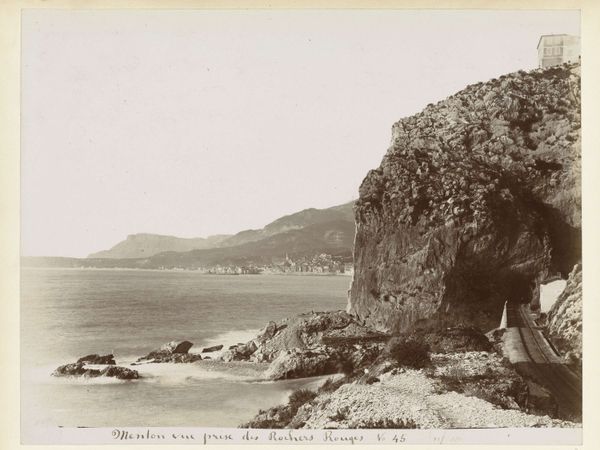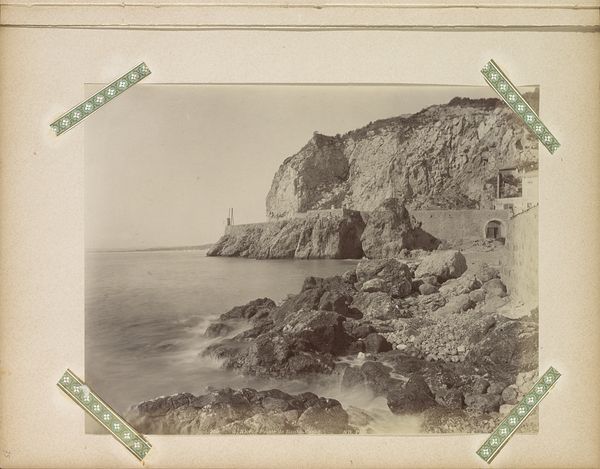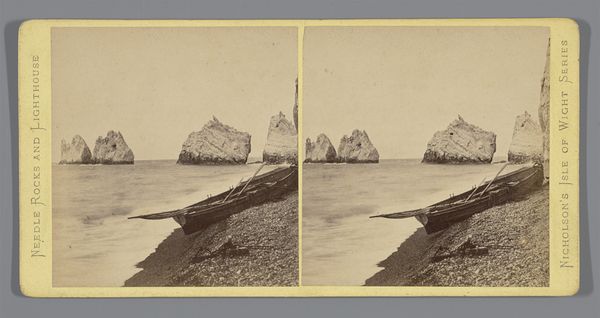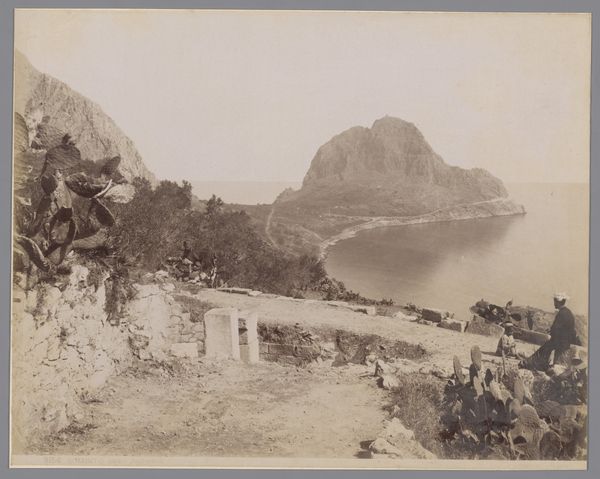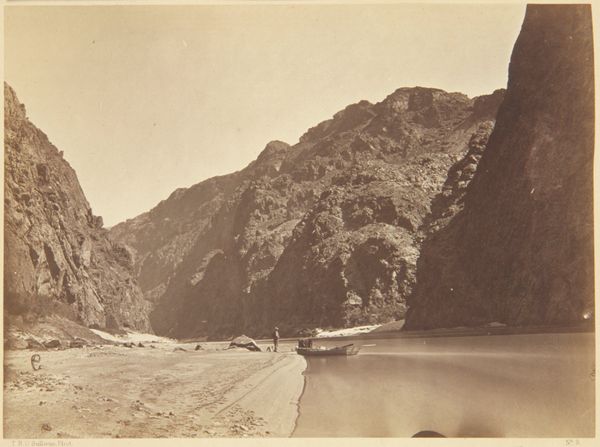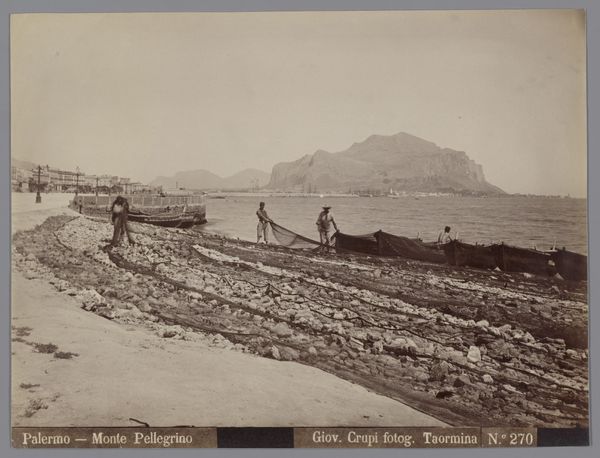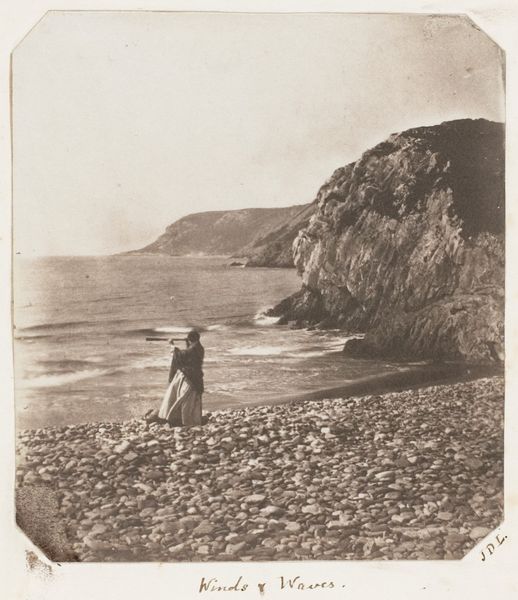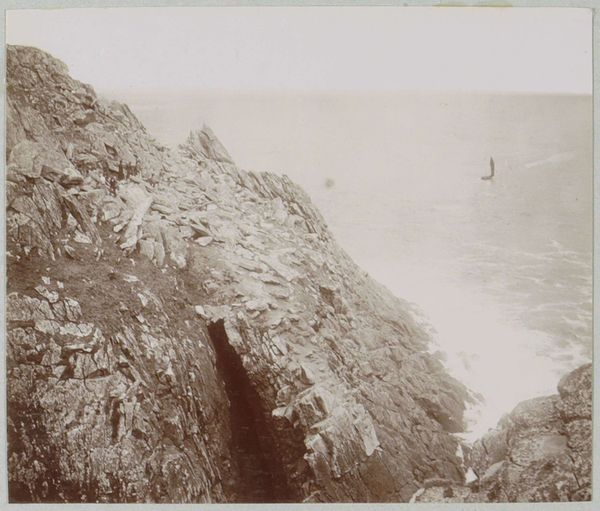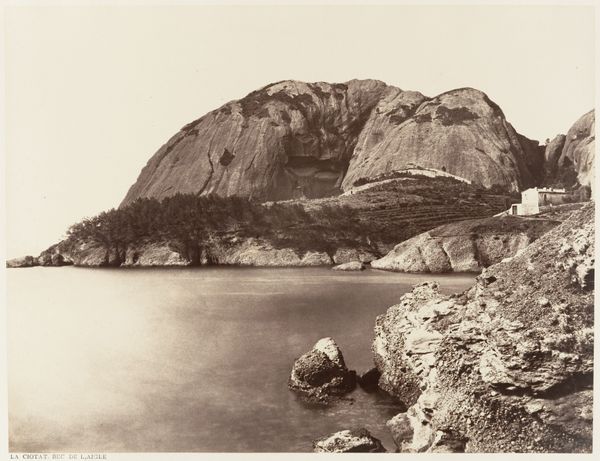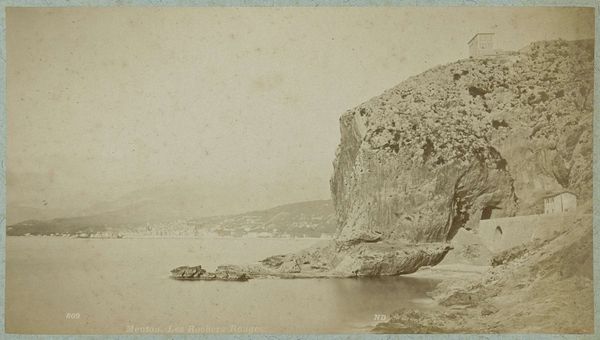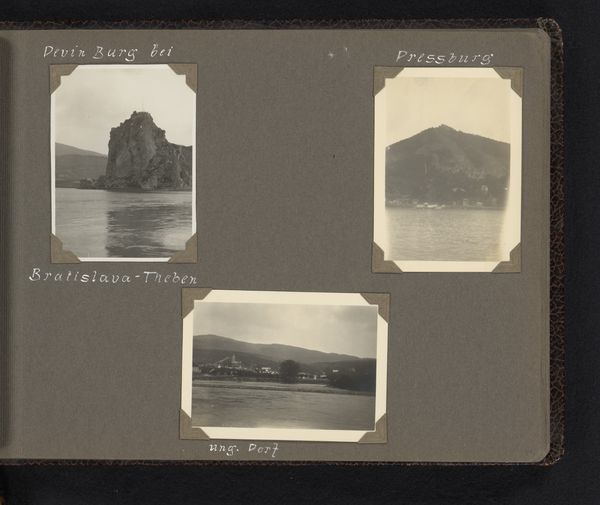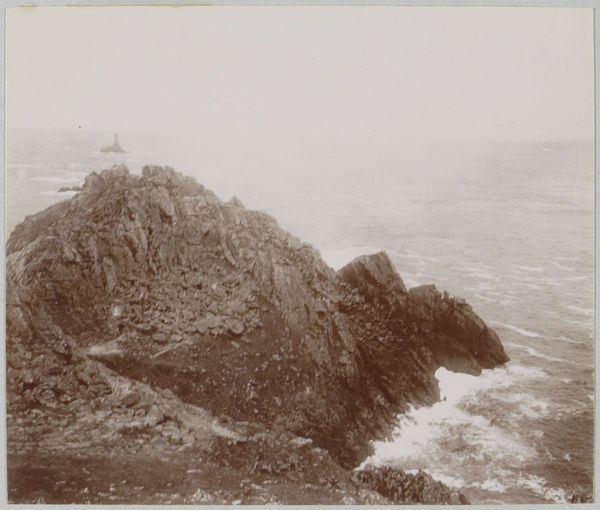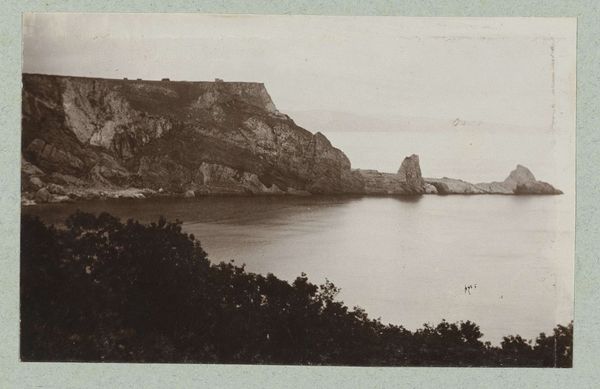
photography, gelatin-silver-print
landscape
photography
orientalism
gelatin-silver-print
realism
Dimensions: height 175 mm, width 232 mm
Copyright: Rijks Museum: Open Domain
Curator: Oh, there’s a melancholic stillness to this one. I feel drawn in, like I'm eavesdropping on a memory. Editor: Yes, it’s Giovanni Crupi’s “Visser bij de haven van Capri,” or "Fisherman by the Port of Capri", taken sometime between 1865 and 1875, a gelatin-silver print, a common but increasingly versatile medium in that era. Look closely at the details that demanded of labor in its process: the coating, exposing, developing, each step so precise and requiring meticulous hands. Curator: It's romantic isn’t it? All these rocky monoliths out in the mist, a figure perched, angling… it has a touch of longing. Almost cinematic, how the mists soften the whole thing, that long exposure smoothing out the water. I am moved with how the scene conveys a sense of solitary peace. Editor: Absolutely, but this "solitary peace" also had very material origins. Silver, gelatin, glass, and photographic equipment required resources and trade routes. Photography, then, relied not just on artistic vision but the network of industry and extraction underpinning the image itself. A kind of serene image of industrial activity. Curator: Industrial even in Capri? Perhaps it's in that composition – the jagged rocks against the almost ghostly sea…a premonition perhaps of some encroachment? He might have been an idealist in his trade, searching for that perfect frame that captures light and feeling so fleeting in reality. Editor: Interesting, but those sharp contrasts tell us a different story. Consider how realism meets orientalism here: there’s something calculated about presenting everyday life, framing even the mundane with exotic overtones, selling visions that cater to European tastes. It speaks to broader power dynamics embedded in the technology of photography itself, and how it could create, alter, and eventually influence culture, as well. Curator: Well, perhaps what's powerful here is how even such an object—fashioned from so much we forget to consider—still pulls me into contemplation. A dance of light and water that touches something…human. Editor: A great example that making art demands many complex forms of labor. And with that said, next artwork please?
Comments
No comments
Be the first to comment and join the conversation on the ultimate creative platform.
